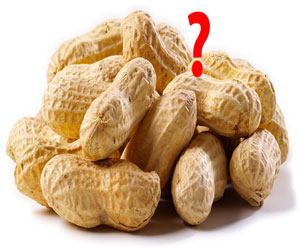
I’ll admit it. I haven’t been paying much attention to aflatoxins. Sure, I’ve seen news clips about them here and there, particularly related to peanut contamination (and rather sensationalized at that), however instead of digging further into the health implications I more or less put my fingers in my ears. “La la la la la.” I mean honestly, like I need one more thing to worry about, especially when it relates to peanuts, the most child friendly food on earth.
But I keep seeing the topic pop up and it’s become clear I can’t … and shouldn’t … ignore it.
What are aflatoxins? Let’s consult Wikipedia for a thorough commentary on the topic. “Aflatoxins are naturally occurring mycotoxins that are produced by many species of Aspergillus, a fungus.” They are toxic and “among the most carcinogenic substances known.”
Alright, my fingers are out of my ears. You had me at carcinogenic. Enlighten me, Wikipedia. Where are these fungus friends found? Or more to the point, how in the world do I avoid them?
“Aflatoxin-producing members of Aspergillus are common and widespread in nature.” It appears they can contaminate grains before harvest or during storage and naturally reside in soil and decaying plants. It can, however, invade all types of organic matter when conditions are ideal for its growth, ie moist and warm.
As it relates to food, aflatoxins tend to contaminate some foods more than others. Peanuts, as I mentioned earlier, are a biggy. Peanuts tend to provide favorable conditions for aflatoxin production both during growth and storage (Interestingly, Valencia peanuts seem to be the one variety resistant to mold growth.). Other foods/products include cooking oils, cassava, corn, cotton seed, millet, rice, sunflower seeds, tree nuts, sorghum, wheat and various spices. Aflatoxin-related compounds have even been found in the products of animals who fed on contaminated grains (think eggs, milk, meat).
But rest assured folks. It isn’t all doom and gloom. We have the FDA, right? Our protector of the food supply surely has knocked this vile microbe out of the food supply. Well, sorta. Like most things harmful to our natural body processes, the FDA has set maximum levels for ingestion. Basically, we can’t reasonably eliminate it without major economic consequences, but we can keep it to a minimum. Not exactly reassuring, but ok. The thing is you can still eat a considerable amount of aflatoxin-laden foods if you aren’t eating a varied diet or simply, by some cruel coincidence, happen to love a wide variety of foods that support aflatoxin production exceedingly well.
This then begs the question, what exactly does happen with aflatoxin ingestion? Wiki wiki, what say you?
“High level aflatoxin exposure produces an acute hepatic necrosis, resulting later in cirrhosis, and/or carcinoma of the liver.” So in other words, it’s possible your liver will slowly stop working and die. Or get cancer. Maybe both. Seriously?
The good news? “Adult humans have a high tolerance for aflatoxin exposure and rarely succumb to acute aflatoxicosis.” Succumb? You mean die? Well that’s good, but still, I’d prefer to avoid exposure altogether if possible and avoid that gray area between sick and succumb.
Also, Andrew Weil has this to say. “The U.S. government tests crops for aflatoxin and doesn’t permit them to be used for human or animal food if they contain levels over 20 parts per billion. While we don’t know much about the dangers of long-term exposure to low levels of aflatoxin, my colleague Kathleen Johnson, a dietitian here at the Arizona Center for Integrative Medicine, points out that there hasn’t been an outbreak of liver cancer among U.S. kids, who as you know, consume enormous amounts of peanut butter (http://www.drweil.com/drw/u/id/QAA115491). Phew, no liver cancer in kids.
What about an increased risk into adulthood? Hard to say, but some studies do indicate that there is a slight increase in risk, especially when there are other liver complications such as Hep B.
What to do? The best we can realistically do is limit our exposure as much as possible. Even if we were to grow and process our own food (make our own grains, harvest our own tree nuts, etc) how do we know the fruits of our labor aren’t somehow contaminated by this prevalent fungus byproduct? We don’t, and that’s why at least at a very base level I am thankful to have some sort of protection with the FDA. But more to the point, we can limit our ingestion of foods known to be contaminated.
So while initially I was about to throw out every peanut-containing product in my house, I will now take a rational yet still protective approach. This likely means we use less peanut products. We’ll make sure that the potentially aflatoxin-contaminated foods that we do eat are stored properly and consumed in a reasonable amount of time. We’ll continue to eat a healthy diet, rich in antioxidants, to help ward off illness and naturally detoxify the body. In fact, one article noted this little gem: “Medical research indicates that a regular diet including apiaceous vegetables such as carrots, parsnips, celery and parsley reduces the carcinogenic effects of aflatoxin.” A healthy diet can cover a multitude of sins.




